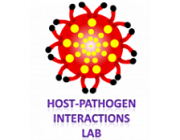Upon contacting the apical plasma membrane of intestinal epithelial cells, a specialized syringe-like structure called the type III secretion system (T3SS) is formed. This syringe-like machinery enforces the injection of ~21 different bacterial proteins, also called effector proteins, from the bacterial cytoplasm directly into the mammalian host cell. The coordinated action of these secreted effectors in space and time is thought to play a pivotal role in inducing the EPEC/EHEC infectivity and disease (3). The main changes induced by the T3SS include: i) the loss of absorptive microvilli and the production of filamentous actin-rich structures (pedestals) underneath the adherent bacterium; ii) inhibition of nutrient/water transporter localization and functions; iii) remodeling of membrane trafficking; iv) targeting mitochondrial functions; v) weakening inflammatory responses; vi) disruption of epithelial barrier functions. However, the precise mode by which these effectors act on their host targets is largely unclear.


